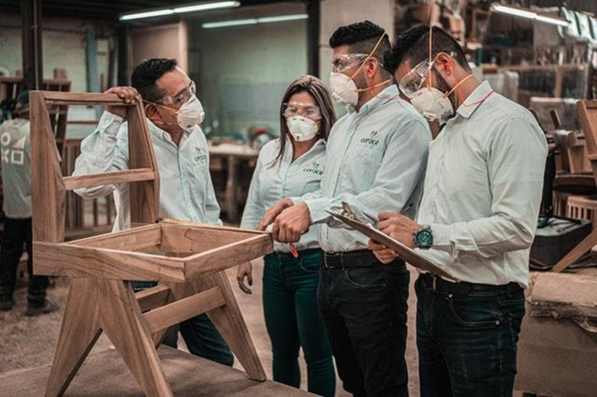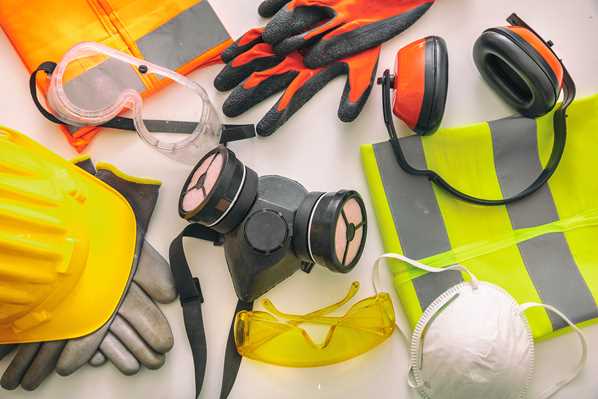
Safety hazards are in almost all workplaces, be it a staid office or a manufacturing facility or construction but admittedly to varying degrees. The precise methods and practices you need to use first to identify and subsequently mitigate these risks vary. Experts also state that many of such safety hazards and risks are not apparent on the surface. Many such workplace hazards are discovered only after a particular issue results from them. As a business owner or professional charged with the task to ensure finding and managing these hazards, you need to identify and take all possible action to minimize the chances of any issues. You can achieve the same through the following four ways:
1. Make Your Safety Culture Stronger
Any organization that is adequately committed to the people’s safety, employees, and workers present on its premises must necessarily adopt a strong and robust safety culture. You want maximum security for your workers. Workplace accident laws and their enforcement are pretty strict here in Oakland, and personal injury lawsuits are common. As an employer, you want to get in touch with services like https://kerleyschaffer.com/oakland-personal-injury-lawyers as soon as a mishap takes place. Coming back to the topic, you need to keep in mind that you cannot ensure a safe workplace all by yourself. Accordingly, you should adopt measures to foster a company culture that encourages doing things the safe way. People looking after this task need to drive home the point to the workers’ mind that everybody stands to win by practicing safety and maintaining an environment free from risks.
2. Ask Company Leaders To Lead The Way
For the success of your workplace safety measures, personnel tasked with the job need to be a vital part of the safety initiative you are taking. Keep in mind that they do have company leaders’ position and that the rest of the team is likely to follow them. Such behavior also translates to the fact that company leaders can potentially make or break your workplace safety initiatives. Convince them to subscribe to your thought process and make the value of your ideas evident to them. If you successfully manage to accomplish this, you are far more likely to gather their full support.

3. Prepare A Plan To Identify And Assess Hazards
By preparing an identification and assessment plan for your workplace hazards, you get practical all-round benefits in:
- Identifying and managing workplace hazards and risks
- And to create and foster a safe culture
Such plans are, in fact, an actionable step by step process intended to help you identify and minimize workplace hazards and ensure better workplace health. (OSHA (Occupational Safety and Health Administration), the relevant US authority, recommends that you follow a particular sequence of steps while devising your plan. They are:
Gather And Review Present Workplace Hazard Information
The first step to take while preparing the plan is collecting and reviewing records of previous safety-related hazards. While doing this, it is crucial to allocate adequate time to the process. The information from such documents is likely to furnish you as an appropriate starting point for your present attempt to identify hazards.
Inspect Workplaces For Both Existing And New Hazards
The workplace dynamics are continually evolving as your business acquires new fixtures, processes, and employees that bring new hazards. Accordingly, conduct regular workplace safety inspections for potentially new hazards. Carrying out even simple tasks like moving things or equipment around can potentially lead to risks and dangers that weren’t previously present.
Detect Potential Hazards To People’s Health
There is indeed a significant difference between health and safety risks according to the occupational health & safety protocols. The former is, in fact, more complicated as it is not always possible to identify them physically. Amongst the present or future threats to your employee health, you need to consider the following aspects of an office object:
- Chemical hazards
- Environmental concerns
- And ergonomic dangers, amongst other factors
Carry Out Comprehensive Investigation Of Incidents
You already have prepared a plan to investigate incidents, but doing a review of relevant information will help you manage future safety hazards and risks. You stand to gain a better insight into the risk locations and measures adopted to address them through such reports.
Discern Potentially Emergency Or Nonroutine Hazards Incidents
There are always one-in-a-million risk types associated with carrying out everyday business operations. Such incidents might be quite improbable but still very much possible. To correctly manage your workplace hazards, you must pay adequate attention to these risks. Such a plan will help you when such disasters strike and furnish you with an action plan to let you handle the same. Among the list of such rare disasters are:
- Explosions
- Fires
- Medical emergencies
- Hazardous spills
- And maybe even violence between workers
Figure Out Hazard Types And Make Suitable Priorities
Lastly, what you need to do is to understand specific risks that give way to additional hazards. In this, evaluation of each risk and threat separately is necessary. You need to figure out how severe the outcomes might be, the number of workers that might potentially be exposed, and the chances for the event to happen. Carrying out this procedure will aid you in making priorities, which will, in turn, let you address more severe issues first.
By identifying, monitoring, and reducing workplace hazard risks, you are in a better position to manage the health of your workplace. Such management will keep accidents to a minimum and reduce employee sickness and the absence resulting from the same. Here’s to a happy, productive, safe, and healthy workforce!




